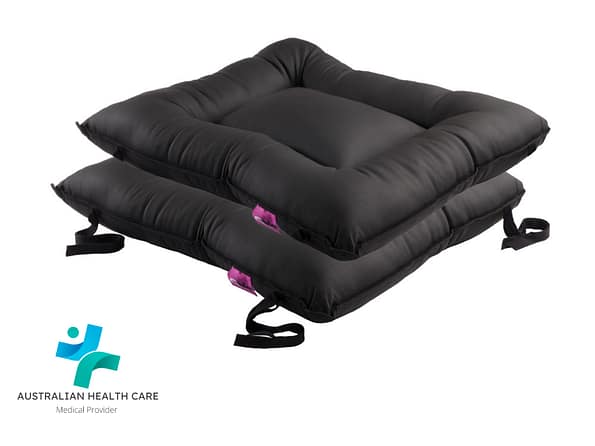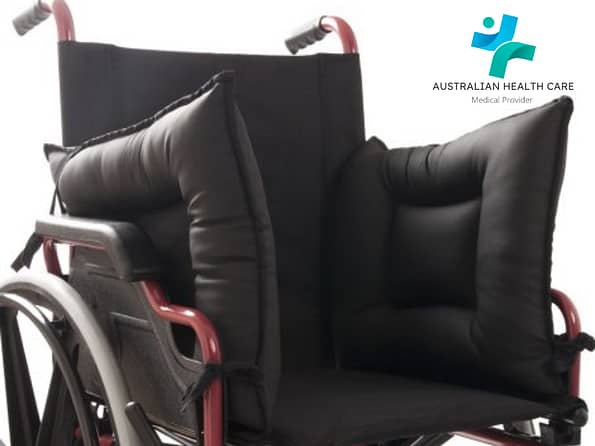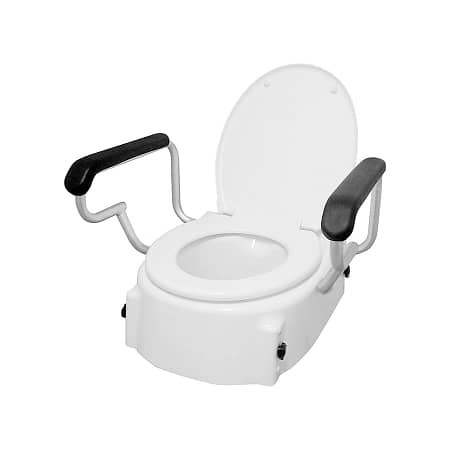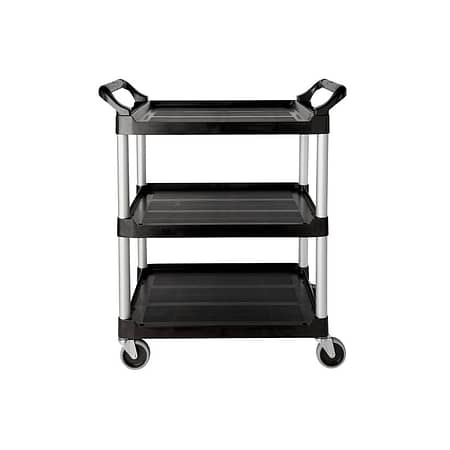Rehabilitation and therapy are critical components of the recovery process for individuals recovering from surgery, injury, or dealing with chronic conditions. These programs are designed to restore functional ability, improve mobility, and enhance the quality of life. However, the journey to recovery often involves prolonged periods of sitting, which can add stress to vulnerable areas of the body.
The Importance of Supportive Seating in Recovery
Supportive seating plays a pivotal role in the rehabilitation process, offering much-needed comfort and stability to patients. Medical chair cushions are specifically designed to provide the support and pressure relief necessary to prevent further injury and aid in the healing process. They serve as an integral tool in ensuring that the path to recovery is as comfortable and effective as possible.
Understanding the Functionality of Medical Chair Cushions

How Cushions Provide Support and Comfort
Medical chair cushions are engineered to offer support by evenly distributing weight and reducing pressure on sensitive areas, such as the tailbone, lower back, and thighs. This not only alleviates pain but also prevents the development of pressure sores, a common concern for individuals confined to sitting for long durations.
The Science Behind Pressure Relief and Distribution
The effectiveness of medical chair cushions lies in their ability to minimize pressure points by spreading the user’s weight across the cushion’s surface. Advanced materials and design technologies allow these cushions to conform to the body’s contours, providing personalized support that traditional seating surfaces cannot offer. This science-backed approach ensures that patients receive the optimal balance of comfort and therapeutic benefit during their rehabilitation.
Types of Medical Chair Cushions Used in Rehabilitation

Foam Cushions: Benefits and Best Uses
Foam cushions are popular for their versatility and range of densities, which can be tailored to individual needs. They are particularly beneficial for patients requiring a stable seating surface that offers both support and comfort. High-density foam cushions are best suited for those at a higher risk of pressure sores, providing durable support and longevity.
Gel Cushions: How They Aid in Pressure Relief
Gel cushions offer superior pressure relief by distributing weight evenly and reducing peak pressure points. The gel’s fluid properties allow it to adjust to the user’s movements, offering continuous support and cooling benefits. These cushions are ideal for patients with significant pain or those who have experienced pressure sores in the past.
Air Cushions: Advantages for Long-term Sitting
Air cushions provide unparalleled pressure relief and customization. By adjusting the air level, users can achieve the perfect balance of support and comfort. These cushions are particularly effective for long-term wheelchair users and patients with a history of pressure sores, as they can be finely tuned to minimize pressure in sensitive areas.
Integrating Medical Chair Cushions into Rehabilitation Programs

Assessment and Selection Process for Therapy Needs
The integration of medical chair cushions into rehabilitation programs begins with a thorough assessment of the patient’s specific needs, including their physical condition, the nature of their injury or surgery, and their overall rehabilitation goals. Healthcare professionals, including occupational therapists and physiotherapists, play a crucial role in evaluating these factors to recommend the most appropriate type of cushion. This personalized approach ensures that the cushion not only provides comfort but also supports the therapeutic objectives of the rehabilitation program.
Customization and Adjustment for Individual Patients
Given the variety of medical chair cushions available, customization and adjustment are key to meeting individual patient needs. Adjustments might involve altering the cushion’s firmness, contour, or support features to better suit the patient’s body shape, weight, and specific medical conditions. Such personalization is essential for maximizing the therapeutic benefits of the cushion throughout the rehabilitation process.
Monitoring and Adapting Usage Over Time
Continuous monitoring of how the patient uses and responds to the medical chair cushion is vital. Over time, a patient’s condition might improve, or new challenges may emerge, necessitating adjustments to the cushion setup. Regular check-ins and feedback sessions allow therapists to make timely modifications to the cushion, ensuring ongoing support and comfort as the patient progresses through their rehabilitation journey.
Benefits of Medical Chair Cushions in Various Therapy Scenarios
Enhancing Comfort During Physical Therapy Sessions
Medical chair cushions can significantly enhance patient comfort during physical therapy sessions. By providing a supportive and pressure-relieving seating surface, these cushions enable patients to engage more effectively in their exercises and treatments, potentially leading to better outcomes and a more positive rehabilitation experience.
Supporting Correct Posture and Spinal Alignment
Proper posture and spinal alignment are crucial for effective rehabilitation. Medical chair cushions are designed to promote an ergonomic seating position, helping to align the spine correctly and prevent strain on the musculoskeletal system. This support is especially important for patients recovering from back surgeries or injuries.
Facilitating Improved Circulation During Recovery
Good circulation is essential for healing and recovery. Medical chair cushions, particularly those designed with pressure relief in mind, help to promote healthy blood flow by preventing prolonged pressure on any part of the body. This is crucial for patients who are less mobile during their recovery period.
Practical Tips for Patients and Therapists
Maximizing the Effectiveness of Cushion Use
For both patients and therapistz, understanding how to properly use and position the cushion is key to maximizing its effectiveness. Patients should be educated on adjusting their position periodically and using the cushion in various settings (e.g., at home, at work, in the car) to maintain comfort and support throughout the day.
Maintenance Tips to Ensure Hygiene and Durability
Maintaining the cleanliness and integrity of medical chair cushions is essential for hygiene and longevity. Patients and caregivers should follow the manufacturer’s instructions for cleaning and caring for the cushion. Regular inspections for wear and tear can help identify when a cushion needs repair or replacement.
Recognizing When to Update or Replace Cushions
Over time, medical chair cushions can lose their supportive qualities or may no longer suit the changing needs of the patient. Recognizing signs of wear, decreased comfort, or less effective pressure relief is important for deciding when to update or replace the cushion. Consulting with a healthcare professional can help ensure that any new cushion continues to meet the patient’s evolving rehabilitation needs.
Overcoming Challenges with Medical Chair Cushions in Therapy
Addressing Common Concerns and Misconceptions
One of the initial hurdles in effectively utilizing medical chair cushions involves dispelling common misconceptionz. Patients and sometimes even caregivers might underestimate the impact a well-chosen cushion can have on rehabilitation outcomes. Educating on the science behind pressure management and the ergonomic benefits of these cushions is key to overcoming skepticism and ensuring they are given due consideration in therapy plans.
Troubleshooting Fit and Comfort Issues
Fit and comfort are paramount when it comes to the therapeutic effectiveness of medical chair cushions. Issues may arise from improper sizing, incorrect positioning, or simply the patient’s adjustment period to a new seating solution. Therapists can aid in troubleshooting these issues by reassessing the patient’s needs, making necessary adjustments to the cushion, or exploring alternative types that might offer a better fit. Regular follow-ups can help address discomfort early on.
Ensuring Consistent Use for Optimal Benefits
The benefits of medical chair cushions are most pronounced with consistent use, as intermittent use diminishes their effectiveness in supporting therapeutic goals. Encouraging patients to integrate the use of their cushion into daily routines, both at home and away, is crucial. Strategies might include education on the long-term benefits, reminders, or even incorporating cushion use into therapy sessions to reinforce its value.
Conclusion
As we look to the future, the integration of technology, ergonomic design, and personalized healthcare promises to revolutionize supportive seating in healthcare settings. From smart cushions that monitor pressure distribution in real-time to materials that adapt to individual body shapes and needs, the potential for innovation is vast. Such advancements could further elevate the role of medical chair cushions, not just in rehabilitation, but across diverse healthcare scenarios, enhancing patient care and quality of life.





















